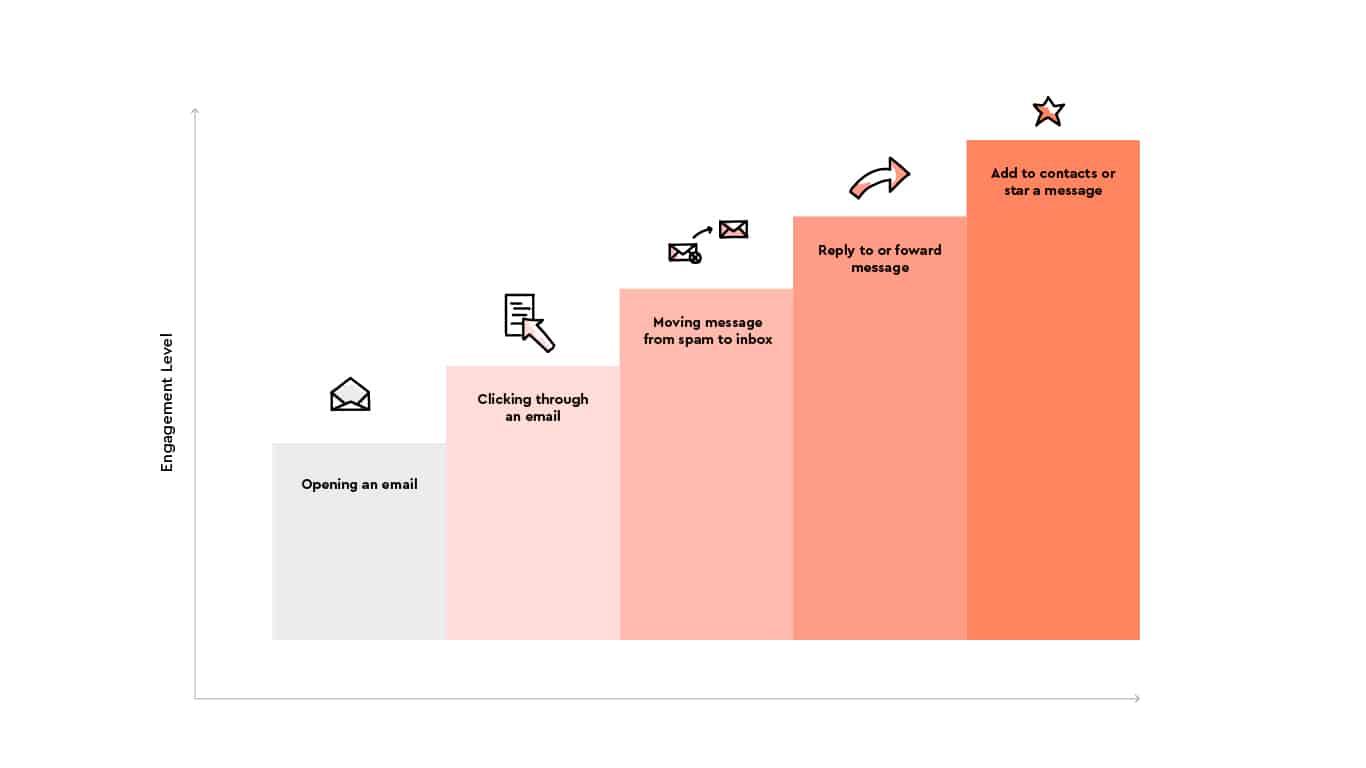
AI and the Retail Marketer’s Future
How AI transforms strategy and processes, driving the adoption of Positionless Marketing
Exclusive Forrester Report on AI in Marketing
Ensuring emails reach your target audience is crucial for successful holiday campaigns. This is why it’s so important to understand how ISPs evaluate whether emails should go to the inbox or spam folder.
This blog post introduces the actions that ISPs consider when evaluating whether you’re a good or bad sender and presents three warning signs that suggest you might be having a deliverability issue.
In our first blog in this series on Email Deliverability for Holiday Campaign Success, we discussed why deliverability—rather than delivery—is such an important metric for marketers. We also discussed factors affecting deliverability and the benefits of fixing a faltering strategy.
In today’s installment, we highlight the actions that indicate positive or negative engagement and present three warning signs of a potential deliverability issue.
ISPs track recipient actions to gauge your credibility as a sender as well as your audience understanding. When an ISP notes positive engagement actions, it is seen as a reflection of healthy interaction, reinforcing trust in you as a sender.
Ultimately, these actions have the power to drive a positive lift in engagement and increase the percentage of messages that will be delivered to the inbox.
Positive email engagement actions include:
Actions that reflect positive email engagement

While certain subscriber actions enhance email deliverability, others can negatively impact it. Knowing which actions hurt your sender reputation helps optimize deliverability and ensure emails reach recipients.
Negative email engagement actions include:
Actions that reflect negative email engagement

In the list above, we didn’t include 'opting out' because unsubscribing isn't considered a negative engagement. While opting out may reduce your database size, it’s far preferable to being ignored or marked as spam.
When marketers fail to adhere to best practices, ISPs may ultimately block their emails entirely, preventing delivery to recipients.
The journey to getting blocked
| | | | | | | --- | --- | --- | --- | --- | | SMPT errors You’ve been repeatedly sending emails to blocked addresses without properly suppressing them, as based on SMTP errors. | -> | Open rates Delivery rates remain flat and consistent, but you begin to notice a decline in unique open rates. | -> | Deferrals When delivery and unique open rates exceed 100%, ISPs start throttling deliveries from your domain or IP. | | -> | Blocklist You have been placed on a global blocklist after sending to a spam trap or malicious address. | -> | ISP Blocklist Global delivery rates significantly low? Your delivery rates at < 5% daily with a specific mailbox provider? You've been blocked. | |
Several warning signs may precede an email block. Here are three that every marketer should be aware of:
Additional signs can be found in error reports, which provide valuable insights from ISPs about delivery issues. Analyzing this data helps marketers identify root causes and address problems.
Recognizing positive and negative email engagement actions enables marketers to proactively improve their sender reputation with ISPs and enhance deliverability.
Understanding the three warning signs of an email deliverability issue and reviewing error reports allows them to take action before emails are blocked.
These steps are essential for boosting email performance and maximizing campaign impact.
Stay tuned for our next post, in which we’ll share field-proven deliverability best practices.
In the meantime, to learn how Optimove can help you improve deliverability rates and increase engagement, contact us to request a demo.
Exclusive Forrester Report on AI in Marketing
In this proprietary Forrester report, learn how global marketers use AI and Positionless Marketing to streamline workflows and increase relevance.


Writers in the Optimove Team include marketing, R&D, product, data science, customer success, and technology experts who were instrumental in the creation of Positionless Marketing, a movement enabling marketers to do anything, and be everything.
Optimove’s leaders’ diverse expertise and real-world experience provide expert commentary and insight into proven and leading-edge marketing practices and trends.


